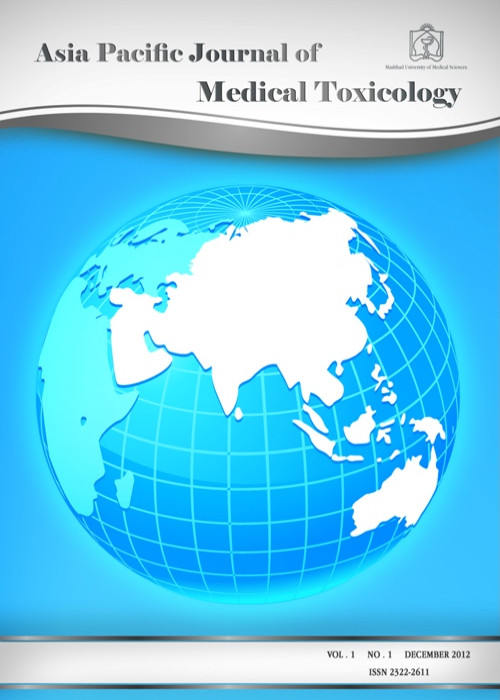Demyelinating Polyneuropathy Following Scorpion Sting Envenomation; a Case Report
Author(s):
Abstract:
Background
Scorpion sting envenomation generally causes treatable local and systemic effects; however, in rare cases, the victims might experience sequels in end organs such as central nervous system. In the present paper, a case of relatively self-limiting demyelinating polyneuropathy following a Butidae sting is presented and the possible mechanisms are discussed. Case Presentation
A 19-year-old man presented to emergency department of Sultan Qaboos University Hospital, Oman with severe throbbing pain at the base of his right big toe after a scorpion sting. His initial examination revealed normal vital signs and the systemic examinations were unremarkable. Few minutes later, he developed profuse sweating, slurred speech, blurred vision, increased salivation and restlessness. Repetition of measurement of vital signs showed a blood pressure of 160/100 mmHg, heart rate of 140 beat per minute and a respiratory rate of 18 per minute. The patients received scorpion antivenom and cholinergic hyperactivity manifestations. Shortly after, the patient developed involuntary jerky movements in both lower associated with fasciculation. Nerve conduction study was suggestive of demyelinating polyneuropathy. In later days, involuntary jerky movements of lower limbs improved gradually but fasciculation remained. On a follow-up visit after four months, the patient still complained of occasional fasciculation.Discussion
One explanation for the development of peripheral nerves demyelination in our patient is the inflammatory response triggered by scorpion venom. In addition, this complication can be attributed to direct cytotoxic effects of scorpion venom toxins. Antimicrobial peptides in scorpion venoms are shown to be highly toxic to human cells, which in our case might have damaged the nerve sheet.Conclusion
Severe scorpion sting envenomation may lead to severe systemic effects and end organ damage. Medical toxicologists should be prepared to diagnose and treat such sequels.Keywords:
Language:
English
Published:
Asia Pacific Journal of Medical Toxicology, Volume:4 Issue: 4, Autumn 2015
Pages:
161 to 164
magiran.com/p1490427
دانلود و مطالعه متن این مقاله با یکی از روشهای زیر امکان پذیر است:
اشتراک شخصی
با عضویت و پرداخت آنلاین حق اشتراک یکساله به مبلغ 1,390,000ريال میتوانید 70 عنوان مطلب دانلود کنید!
اشتراک سازمانی
به کتابخانه دانشگاه یا محل کار خود پیشنهاد کنید تا اشتراک سازمانی این پایگاه را برای دسترسی نامحدود همه کاربران به متن مطالب تهیه نمایند!
توجه!
- حق عضویت دریافتی صرف حمایت از نشریات عضو و نگهداری، تکمیل و توسعه مگیران میشود.
- پرداخت حق اشتراک و دانلود مقالات اجازه بازنشر آن در سایر رسانههای چاپی و دیجیتال را به کاربر نمیدهد.
دسترسی سراسری کاربران دانشگاه پیام نور!
اعضای هیئت علمی و دانشجویان دانشگاه پیام نور در سراسر کشور، در صورت ثبت نام با ایمیل دانشگاهی، تا پایان فروردین ماه 1403 به مقالات سایت دسترسی خواهند داشت!
In order to view content subscription is required
Personal subscription
Subscribe magiran.com for 70 € euros via PayPal and download 70 articles during a year.
Organization subscription
Please contact us to subscribe your university or library for unlimited access!


